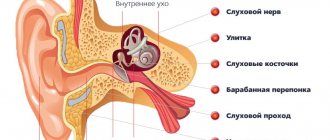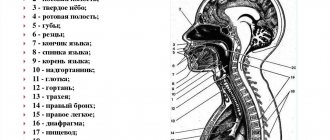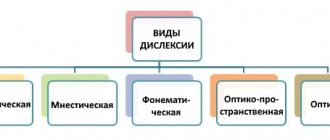Article:
Speech is a complex motor skill implemented by a large number of anatomical structures. The structure of the human vocal apparatus includes the organs of the respiratory system, larynx, tongue, teeth, etc. If the integrity of any of them is violated, the sound production process is disrupted. Knowledge of the anatomical structure and operating principle of the articulatory organs is important not only for singers or other professions related to music, but also for ordinary people. Speech disorders can occur in both children and adults, leading to disruption of the processes of social adaptation and learning.
Production of sounds
The process of sound and voice formation has been well studied over the past decades. The acoustic component of speech arises as a result of the work of the muscles of the peripheral apparatus. It works like this. When starting a conversation, a person unconsciously exhales slowly. The air flow from the lungs enters the larynx, the ligaments of which are in a certain position corresponding to the required sound. In addition, the tongue, lips and lower jaw also take the necessary position. The vibration of the vocal cords in the larynx during the passage of air flow creates a sound that is corrected by the organs of the oral cavity.
Speech is a complex process in which several dozen anatomical structures are involved. Organic or functional disorders in any of them will lead to a change in voice or the appearance of speech defects of varying severity.
Definition of phonetics, various sections of phonetics
Phonetics is a branch of linguistics that studies the sound side of language.
It includes all the sound means of the language, that is, not only sounds and their combinations, but also stress and intonation. Depending on the volume of material that is the subject of direct research by phoneticians, general phonetics and comparative phonetics and private phonetics of individual languages are distinguished. General phonetics examines the patterns characteristic of the sound side of any language. Comparative phonetics deals with identifying the common and special in the sound aspect of two or more comparable or compared languages. Phonetics of individual languages studies the features of the sound side of an individual language as fully as possible. In turn, in the phonetics of individual languages, historical phonetics and descriptive phonetics are distinguished. Historical phonetics of a particular language studies the history of the sound means of a given language to the extent that it is reflected in written records in this language, dialect speech, etc. Descriptive phonetics studies the sound means of a particular language at a certain period of its history or in its present state. In phonetics, such private disciplines are distinguished as articulatory phonetics, acoustic phonetics, perceptual phonetics, functional phonetics, or phonology, accentology, or the study of word stress, intonology, or the study of intonation. Articulatory phonetics studies the activity of the human speech apparatus, as a result of which sounds are produced. Acoustic phonetics studies the purely physical features (characteristics, parameters) of speech sounds in individual languages. Perceptual phonetics examines the characteristics of the perception of speech sounds by the human hearing organ. Functional phonetics, or phonology, studies the functions that speech sounds perform as part of the sounds that form the material, perceptual side of the meaningful units of language: morphemes, words and their forms. Thus, the terms phonetics and phonology cannot be equated: phonology is only a part of phonetics, a private discipline that studies the functions of speech sounds and phonemes. Among other linguistic units - grammar, lexicology - phonetics occupies an equal position with them as an independent science. It interacts primarily with grammar. This interaction is due to the fact that the same sound features of the sound form of linguistic phenomena turn out to be significant not only for the sound side of the language, but also for some areas of its grammatical structure. For example, certain types of alternations turn out to be morphologized, that is, they are used in the formation of different forms of the same words or different words from the same root morphemes. (cf. in Russian: wake up - buzhu, drive - drive, friend or in German: sprechen-sprach, stechen-stach. Such morphologized alternations of sounds are studied by a discipline that arose at the intersection of phonetics and morphology, called morphonology. As for phonetics , and for syntax the rules of phrasal intonation of specific languages are very important, since each specific sentence is characterized by a certain intonation design.Therefore, the data obtained in actual intonological studies find the most direct application in works on descriptive syntax.
Anatomy of speech
The vocal apparatus is a set of anatomical structures that provide the formation of voice and speech. In its structure, it is customary to distinguish two large sections: peripheral and central. The central section is represented by the brain, in particular, the cerebral cortex, a number of subcortical nodes and pathways connecting them together. In addition, it includes the nuclei of the cranial nerves, which are involved in sound production. The anatomy of the peripheral vocal apparatus includes bone, cartilage and muscle formations, ligamentous apparatus and peripheral nerves that perceive or transmit any information to the organs of articulation.
The peripheral department is divided into three functional departments that perform different tasks: respiratory, vocal and articulatory. If any of them malfunctions, speech disorders occur.
Respiratory section
The main sound-producing factor is air passing through the respiratory tract. In this regard, vocalists always practice proper breathing to improve the acoustics of their voice. Breathing movements are carried out reflexively; as a rule, in ordinary life a person does not think about when to inhale or exhale. The regulatory mechanism is associated with the respiratory center in the medulla oblongata.
The respiratory section includes both lungs, the tracheobronchial tree, the diaphragm and the intercostal muscles. The movements of the latter lead to expansion of the chest during inhalation and its narrowing during exhalation. The diaphragm is involved in the abdominal type of breathing, which is carried out mainly due to its stretching.
The formation of sounds and words occurs during exhalation. The air passing through the vocal and articulatory departments causes their structures to vibrate. If a person has lung diseases, the sound of speech is distorted.
Voice department
In phoniatry, there are three characteristics of any person’s voice: timbre, pitch and strength. All of them are created when the vocal cords vibrate as air passes through them. The amplitude of the vibration determines the strength of the voice. The stronger the vibration, the higher the sound. Timbre is determined by voice coloring, specific to each individual person. The tension of the folds and the degree of air pressure on them create a certain pitch of the voice.
One of the most common complaints from patients is changes in voice characteristics. Most often, this condition is associated with functional disorders that occur against the background of infectious and non-infectious diseases.
Sound department
The structure of the articulatory part of the vocal apparatus includes anatomical formations that are located in the oral cavity: the lower jaw, tongue, soft palate and lips. Movements of these structures are carried out with the help of muscles. If their work is disrupted, a person may develop various speech defects. Speech therapy exercises and massage allow you to train muscles, improving speech.
The tongue is the main articulatory organ. Its basis is striated muscles, which provide movement and change in shape. During a conversation, it can become longer, shorter, and also change its width. The structure of the tongue is divided into three parts: the root, fixed to the floor of the oral cavity, the back and the tip.
The lower and upper lips are movable structures. They participate in the pronunciation of almost all sounds, as they determine the speed of air flow from the oral cavity. Thanks to facial muscles, they can change their shape, which also plays an important role in the physiology of speech in humans. The mandible is located at the bottom of the skull and has a limited range of motion. Participates in the pronunciation of stressed vowels: “O”, “U”, “I” and a number of others.
The soft palate forms the upper border of the oral cavity and is tightly connected to the hard palate. Thanks to developed muscle fibers, it can rise and fall down. Anatomically separates the oral cavity from the nasal pharynx. It has a small tongue at the end. When pronouncing the consonants “N” and “M”, the velum is lowered. All other sounds are pronounced with the soft palate lowered. When movement is impaired, the voice becomes nasal, which is associated with the direction of air flow into the nasal cavity.
If a speech defect appears, you should not try to eliminate it yourself. Such treatment should be carried out by a speech therapist or doctor.
The articulatory apparatus also includes a number of passive structures: dentition, nasal cavity, hard palate and pharynx. They participate in sound pronunciation, acting as support points for the tongue and soft palate.
Signs that distinguish vowel sounds from consonants
1. The main difference between vowels and consonants is their role in syllable formation. A vowel sound always forms the top of a syllable and is a sonant; a consonant accompanies a sonant and is a consonant. 2. The articulatory difference between vowels and consonants consists of different tensions of the pronunciation apparatus and the absence or presence of a focus of formation. 3. During the formation of vowels, the voice dominates over noise, while during the formation of most consonants (with the exception of sonorants), the relationship is the opposite: noise dominates over the voice. The presence of two types of speech sounds (vowels and consonants), differing in articulation, forces a classification of vowels to be made separately from the classification of consonants.
Speech apparatus and defects
The degree of development of the speech apparatus determines the quality of pronunciation of sounds. Diseases of any of the departments are manifested by a deterioration in sound pronunciation and change the characteristics of a person’s voice. The task of speech therapists and doctors when identifying phoniatric symptoms is to identify the causes of their occurrence and select methods to eliminate the defects.
Due to the complexity of the structure of the speech apparatus, there are many possible causes of impaired sound pronunciation. Diagnostic measures should always be comprehensive and selected individually for each person. There are several reasons for the development of speech defects, which occur most often:
- organic disturbances in the structure of individual structures;
- their functional immaturity, which causes incorrect movements during the conversation;
- neurological disorders in those parts of the central and peripheral nervous system that are involved in the formation and formation of sounds.
With these defects, a person often notices problems with breathing, swallowing food and liquids. Such symptoms gradually lead to a decrease in the level of quality of life and can cause impaired adaptation in society, depression and other negative consequences. If you have delayed speech development or other defects, you should always seek professional help from doctors or a speech therapist. Specialists will conduct the necessary examinations and select corrective measures to eliminate the organic or functional defect.
The human vocal apparatus has a complex structure and consists of three main parts: respiratory, vocal and articulatory, or sound-pronouncing. All structural departments act in concert, determining not only a person’s voice, but also the formation and pronunciation of all sounds and words. The regulation of the speech process is carried out by the central nervous system, namely the cerebral cortex, subcortical extrapyramidal systems and the nuclei of the cranial nerves. Knowledge of anatomy allows you to promptly identify changes in the speech organs, primarily located in the oral cavity.







